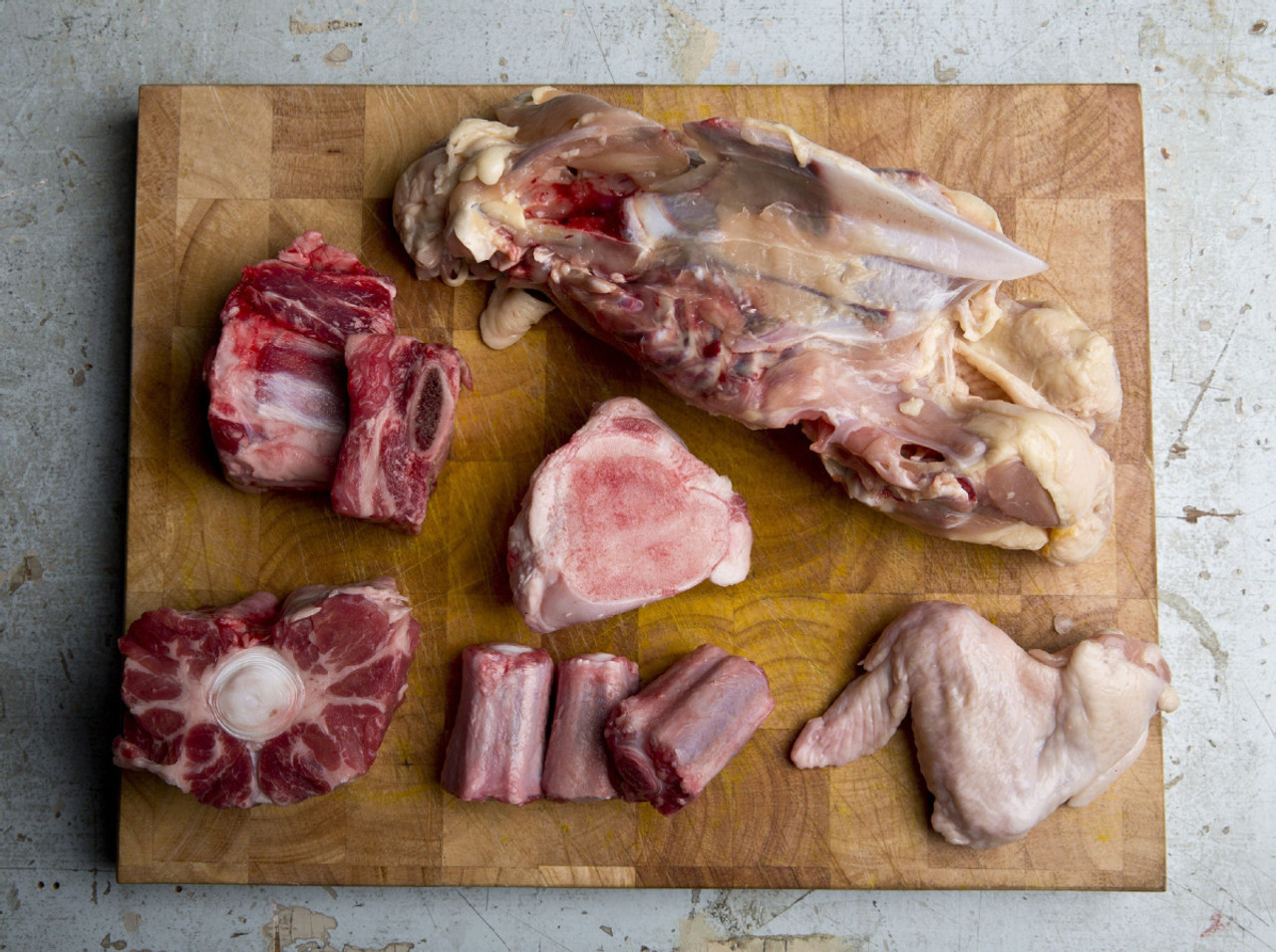
Bones
Bones: an absolutely required part of the home-prepared fresh foods diet. Not optional unless you are using a calcium supplement in place of bones or feeding a properly balanced prepared raw food.
Dogs diets require a ca:ph ratio of 1:1 to 2:1. Cats have a narrower margin of this ratio, requiring a 1:1 to 1.3:1 ratio for proper nutritional balance.
Many people feed a diet that consists of predominantly raw meaty bones, which can be a VERY healthy and excellent choice - from weaning and into old age. when doing so, they are feeding most meals with the meat "on the bone" -- maintaining the consumable bone amount in the diet at a proper and adequate % or ratio.
Raw bones provide necessary calcium (and other minerals, plus quite a bit of fat) in the ancestral diet. Raw feeders absolutely must feed either raw meaty bones or "boney" fully consumable raw bones, either whole or ground-up.
Home-cooked diets must either pressure cook bone-in cuts that they can puree or mash (an immersion blender works best) to make the bones safe to consume, or rely on an added calcium supplement when preparing a fresh foods diet at home. Bones should never be fed cooked unless properly pressure cooked into a soft mush.
Skipping this essential component of the diet puts your animal at risk for very serious health and development complications associated with the lack of adequate calcium in the diet. Please be sure you are feeding a proper balance of ca:ph -- it is very important!
There are two primary categories of bones to be aware of:
1) RAW MEATY BONES -- are fully consumable and have a fair or good amount of meat attached; bone to meat ratios will vary on the different cuts. You need to feed a minimum of 10% bone, so we have sorted the bones we have available by % calcium they provide to make meal planning easier. (COMING SOON)
2) RECREATIONAL BONES make GREAT broth! These are optional and many avoid them entirely. These bones are the highest risk bones -- used for recreational purposes only. They do not provide adequate calcium in the diet because they are not meant to be fully consumed. These are dense bones that are stripped of meat, mechanically cut weight bearing bones, from large herbivores. Bones in this category are at high risk for breaking teeth, they can get caught/wedged inside the mouth, jaw or throat, and they can break into sharp shards that may cause damage to the mouth or GI tract. However, they make excellent broth, and roasted marrow, served scooped out from inside the bone, is delicious and nutritious. These bones are great for individuals that do not bite down hard; those that simply lick and savor the bones as a treat and not as a meal.
Note: Feeding ALL bones poses a risk of choking, so supervision is absolutely essential at every feeding. You must also choose bones wisely, or feed ground bones, or a calcium supplement, if you are concerned about this possible risk.
If your animal is on certain medications (corticosteroids, pain medications, anti-inflammatory/NSAID drugs) the risk for obstruction and intestinal perforations increases dramatically. Bowel obstruction and intestinal perforations is simply a common side-effect of these drugs, even when an animal is eating a diet of just kibble or ground foods. We recommend not feeding bones under these circumstances.
